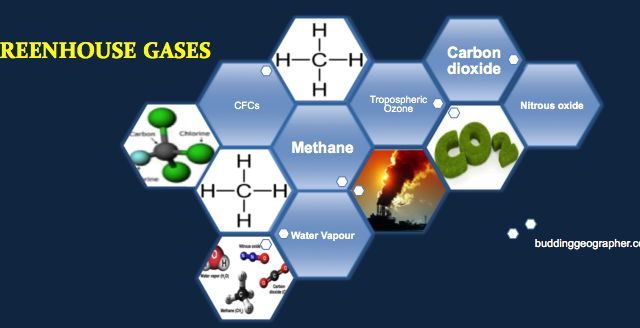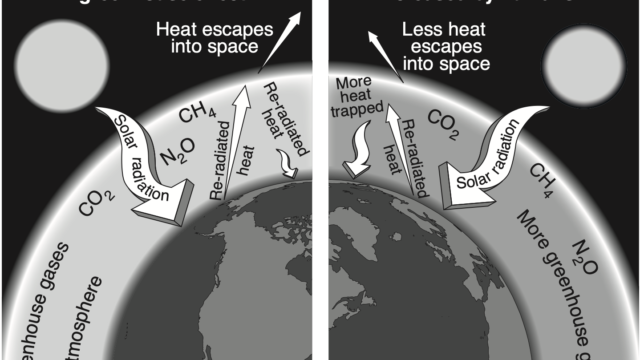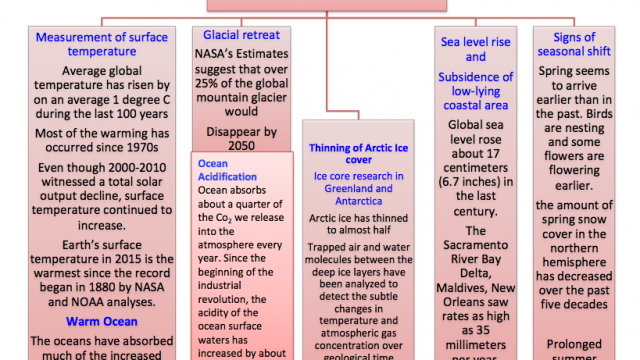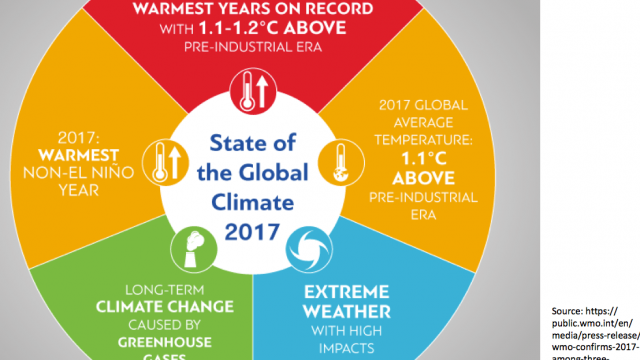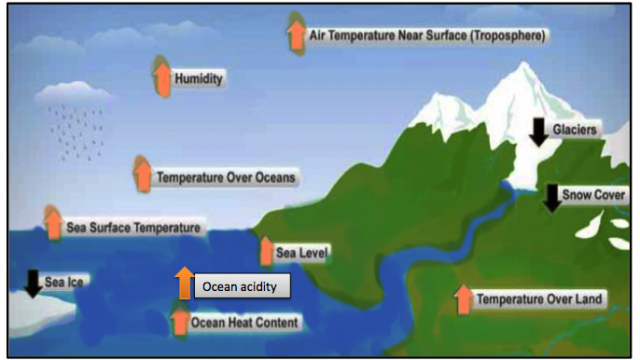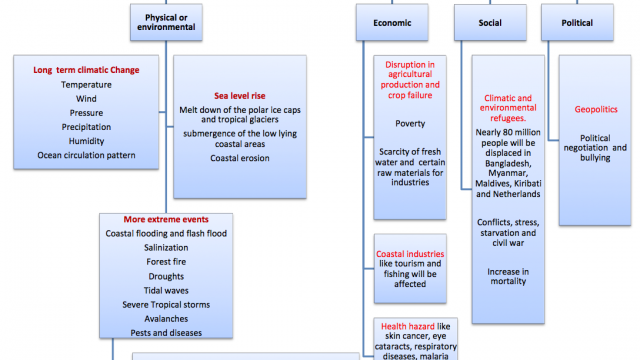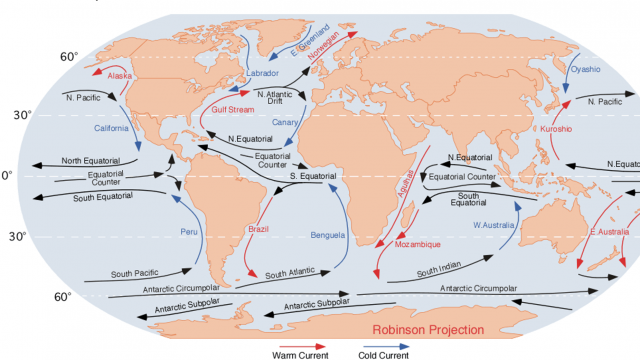We live in a greenhouse
Solar radiation is the main source of energy on the Earth. About 50% of the radiation (mainly short wave radiation) reaching Earth’s atmosphere passes through the air and clouds to the surface, where it is absorbed and then radiated upward in the form of long-wave infrared heat. About 90 percent of this heat (long wave radiation from the earth) is then absorbed by the greenhouse gases like Carbon dioxide, Water vapor, Methane, Nitrous Oxide and radiated back toward the surface. This is how the Earth is warmed up to a life-supporting average of 15 degrees Celsius. This process is known as greenhouse effect. Greenhouse effect is necessary for the sustenance of life on earth. The problem is enhanced greenhouse effect caused by the increasing level of the greenhouse gases in the atmosphere mainly due to human activities.
What is enhanced greenhouse effect or global warming?
Is the progressive or intensified warming up of the earth and its atmosphere beyond a critical limit due to enhanced green house effect that can not be balanced out by the Earth’s natural balancing system (energy budget). It is happening because of the rising level of the greenhouse gases in the atmosphere mainly due to the burning of fossil fuels (coal, oil, gas), cutting down forests and other industrial and agricultural activities. Greenhouse gases like water vapour, carbon dioxide, Methane, nitrous oxide, chlorofluorocarbons etc. allow the shortwave radiation from the sun to pass through the atmosphere but trap a significant portion of the long wave radiation from the earth (blanketing effect).
What does global climate change indicate?
The changes in the global pattern of rainfall and temperature mainly caused by the enhanced greenhouse effect and the consequent changes in sea level, habitat, incidence of droughts, floods and storms.
Construct a Nexus diagram using the given template.
To download the template click on the following link. Nexus_hexagons
Exam Q. One Environmental Impact of Global Warming/also important for option B
Changing Ocean circulation: Gulf Stream is slowing down rapidly
Heat is transported from the equator to polewards not only by the atmosphere but also by ocean currents, with warm water near the surface and cold water at deeper levels. The best-known segment of this circulation is the Gulf Stream, a wind-driven gyre, which transports warm water from the Caribbean to northwards. A northwards branch of the Gulf Stream, the North Atlantic Drift, is part of the thermohaline circulation (THC). The Gulf Stream is one of the strong ocean currents that carries warm water from the sunny tropics to higher latitudes. Much of NW Europe is currently warmer than areas at similar latitude. The NW of Europe is warmer because of the Gulf Stream (conveyer belt circulation), which moves warm water from the Gulf of Mexico to Europe. This warm water warms NW Europe and protects it from the cold winter. In the south of Iceland the warm water of the Gulf Stream sinks because of the salinity of the water and returns south. Permafrost melting in Northern Russia and ice shelf melting in Greenland is changing the salinity level and temperature of the water. Global warming could lead to an increase in freshwater in the northern oceans, by melting glaciers in Greenland. The freshwater is lighter and colder than heavier, salty water that typically occupies that area. It therefore tends to sit on top of the water column, interfering the formation and sinking of dense, cold and salt-enriched waters at the deeper level. This chokes off the northward flowing Gulf Stream, slowing it down, and affecting ocean circulation. Scientists believe that the salinity of the water might fall so much that the Gulf Stream will stop. If this happens then NW Europe will begin to cool and will enter into an ice age.


